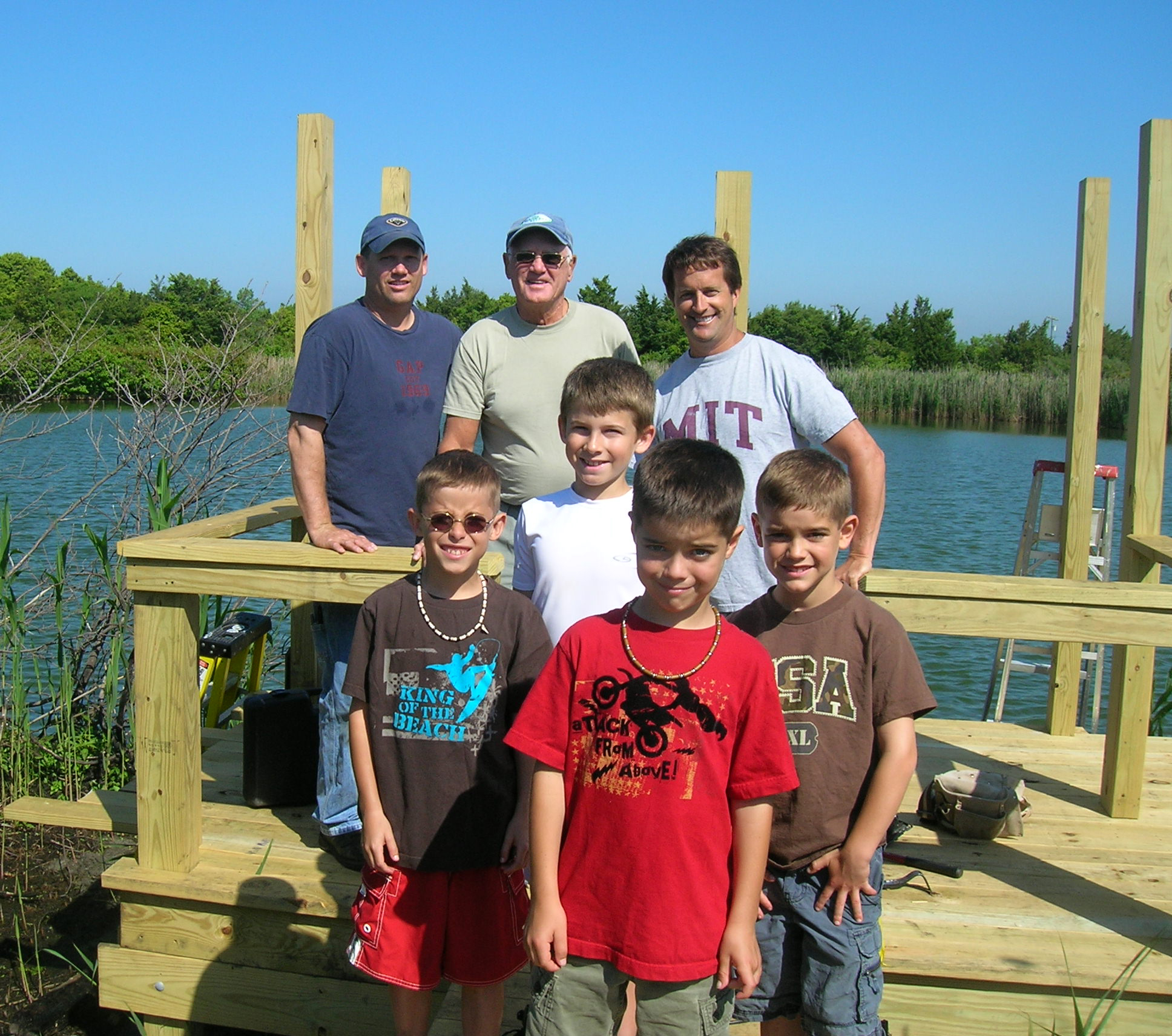|
You are viewing ARCHIVED content published online before January 20, 2025.
Please note that this content is NOT UPDATED, and links may not work. For current information,
visit https://www.nps.gov/aboutus/news/index.htm.

Sandy Hook Foundation Photo
Contact: Jane Ahern When a wildlife viewing platform at Gateway's Sandy Hook Unit in New Jersey burned down in 2008, rebuilding it became an important project. The project was completed thanks to incredible teamwork, including funding from The Sandy Hook Foundation and the New Jersey Audubon Society, support from Builders General Supply Company and Walsack Home Improvements of Fair Haven, and leadership board members Jim Lizotte for construction, Dave Hoder for engineering, and Pat Alcaro for management. "Everyone involved in this project had an amazing 'we can do it' attitude,'" said acting Sandy Hook Unit superintendent Dave Avrin. "The groups involved took on this project from A-Z and they did it as a volunteer effort using donated funds and in-kind services. Now that the new construction is complete, visitors can enjoy both seasonal migratory observations and year round wildlife viewing." The Sandy Hook Bird Observatory of the New Jersey Audubon Society provided input regarding placement of the viewing ports. After visiting the finished blind, senior naturalist Scott Barnes said, “it looks great, has nice viewing ports, and doesn’t have a roof so you won’t miss birds flying overhead. I think this will stop folks from accidentally flushing birds from the pond, keep your feet dry, and should revive interest in birding this part of the Hook. In general, the blind will reduce disturbance to resting and feeding birds while providing an opportunity for people to enjoy them.” Barnes also described some birds one might encounter in at Nike Pond, including the state threatened black-crowned night heron, which are suspected of breeding nearby and are present from April through October. Other birds include the pied-billed grebe, a variety of waterfowl such as wood duck, American wigeon, black duck, mallard, green-winged teal, and ring-necked duck. Bruce Lane, supervising park ranger for national resources at Sandy Hook, provided additional information for those visiting the blind. “If you approach quietly, you may see some painted turtles sunning themselves on the floating logs. Also, hognose snakes have been seen in the area recently, feeding on fowler toads. Some of the plants you can expect to see along the boardwalk include marsh mallow, marsh elder, poison ivy, beach plum, and higbush blueberry.” Note: Laurie Bratone with Sandy Hook Foundation co-wrote this article with the NPS |
Last updated: February 26, 2015
